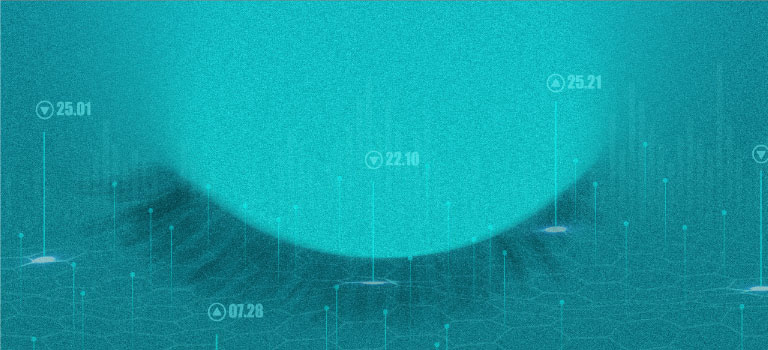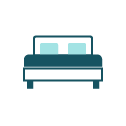How to Use Sleep Data to Effectively Improve Rest

Sleep is a critical component of health. However, the Centers for Disease Control and Prevention reports that 1 in 3 U.S. adults does not get enough sleep. To help their restless consumers, many companies have invested in technology that can more accurately monitor physical activity, sleep and circadian rhythms.
“Vast amounts of multi-sensor data are being generated with potential applications ranging from large-scale epidemiological research linking sleep patterns to disease, to wellness applications, including the sleep coaching of individuals with chronic conditions,” write the authors of “The future of sleep health: a data-driven revolution in sleep science and medicine,” published in npj Digital Medicine.
While data from consumer sleep trackers can be helpful in identifying movement or sleep interruptions, they can’t diagnose sleep disorders, explains Dr. Dulip Ratnasoma with the Sentara Martha Jefferson Sleep Medicine Center in Charlottesville, Virginia. For people with sleep apnea, restless legs syndrome, or a movement disorder, clinical data needs to be collected, often during a medical sleep study.
Those in need of a good night’s sleep may want to be aware of the limitations of the data that they personally collect and should turn to professionals for more accurate analysis of appropriate data when making health decisions.
What Can Data Tell Us About Sleep?
Sleep has been studied for centuries, from the medieval Sephardic Jewish philosopher commonly known as Maimonides or Rambam (1135–1204), a pioneer of modern sleep hygiene, who recommended at least eight hours of sleep, to the three scientists who won the Nobel Prize in 2017 for their discoveries related to circadian rhythm, which helps to regulate sleep patterns. Despite such a huge body of research, there are gaps in existing knowledge about what factors play a role in sleep and sleep disorders. Experts are looking to big data to fill those gaps.
Big data refers to extremely large, complex data sets, especially from new data sources, that can’t be analyzed with conventional techniques like traditional data processing software. Using analytics, these large amounts of data are examined to uncover hidden patterns, correlations and other insights.
Villanova University highlights five ways that big data can be used specifically to improve sleep:

Improve knowledge and treatment of sleep conditions.

Identify root causes of sleep disorders.

Link behaviors to sleep quality.

Improve mattress design.

Personalize recommendations for better sleep.
Companies have begun using big data to draw important insights about sleep: In 2018, wearable fitness tracker manufacturer Fitbit released the largest set of sleep data ever assembled, culled from 6 billion nights of its customers’ sleep.
Analysis of the data indicates the following:
- Women sleep about 25 minutes longer per night than men, clocking an average of six hours and 50 minutes of shut-eye.
- Women are 40% more likely to suffer from insomnia than men.
- On average, a 20-year-old gets half an hour more deep sleep per night than a 70-year-old.
- The average American slides under the covers at 11:21 p.m.

Sources of Sleep Data
While the average person can’t realistically analyze massive amounts of sleep data, they can collect data on themselves to improve their own habits. Such information can help individuals identify troubling patterns that may require the assistance of a doctor for further research and potential intervention.
How can I collect data on my sleep?
- Sleep diary. This can be as simple as a journal in which a person jots down notes. The American Academy of Sleep Medicine offers a two-week sleep diary template for download.
- Wearable sleep tracker. These are devices typically worn on the wrist, like the Fitbit or Apple Watch, or on the finger, like the Oura Ring. “I think trackers are really powerful in that they give people data on their sleep automatically without them having to collect it by hand,” Dr. Ratnasoma said.
- “Nearable” sleep tracker. Dr. Ratnasoma calls these non-wearable trackers “nearables” because these devices are placed on the nightstand or clipped onto the bedsheets. These devices can measure motion, temperature, respiratory rate and other data.
- Mobile sleep app. Sleep tracking apps commonly use smartphones’ built-in accelerometers to track movements during sleep. Apps may also record sound or wake a person up at the right time in their sleep cycle with an alarm. Some sleep medicine specialists have concerns about a lack of research on the validity of sleep apps.
- “Smart” mattress. A smart bed or smart mattress can provide a higher level of detail than wearable sleep trackers. They monitor motion to calculate when a person falls asleep, how often they toss and turn and the total time they spend in bed. Some smart mattresses also analyze heart rate and breathing rate and allow for mattress temperature adjustment.

What Do Sleep Trackers Monitor?
Sleep trackers don’t measure sleep directly. Rather, they measure inactivity as an estimate for sleep. These devices may also measure:
- Sleep duration
- Sleep quality
- Sleep phases
- Environmental factors (e.g., room temperature)
- Lifestyle factors (e.g., caffeine intake, stress level)
At his sleep clinic, Dr. Ratnasoma finds that many patients come in for a sleep study based on data from these consumer devices.
“Almost 50% of our patient panel has some kind of sleep tracker or fitness watch or wearable product,” he said. “I think a lot of them are using it to gauge for themselves if they have a sleep problem, whether it’s very restless sleep, or if it’s not much deep sleep or not enough sleep.”

What Do Sleep Studies Monitor?
Consumer sleep tracking devices cannot diagnose sleep disorders. Anyone who is experiencing symptoms such as waking up several times a night or excessive daytime sleepiness should see a doctor, said Dr. Ratnasoma. A doctor may recommend a clinical sleep study.
A clinical study may use various techniques to measure and monitor sleep:
- Limb monitors allow doctors to diagnose sleep movement disorders, such as restless leg syndrome.
- Respiratory effort belts measure respiratory flow, enabling diagnosis of sleep disorders such as obstructive sleep apnea.
- Electrocardiograms (ECGs or EKGs) record the electrical signals from the heart.
- Electroencephalograms (EEGs) measure the electrical activity of the brain, as well as eye movements, to determine stages of sleep and diagnose nocturnal seizures.
- Electromyograms (EMGs) measure muscle movements and twitching in the legs, for example.
What You Can Do to Improve Your Sleep
Of course, not everybody wants to wait for a full-scale study to get better rest. There are many things individuals can do at home to increase their likelihood of getting a better night’s sleep and to improve their “sleep hygiene.” According to Dr. Ratnasoma, “as much as 90% of insomnia is behaviorally induced.”
Some ways to improve sleep habits and create a better sleep environment include the following:
Set an ideal room temperature.
As a rule of thumb, the bedroom should be between 60 and 67 degrees Fahrenheit. The ideal sleep temperature is 68 degrees Fahrenheit, said Dr. Ratnasoma. A smart thermostat can help by automatically adjusting heating and cooling temperature settings to coincide with bedtime.
Monitor noise level.
Generally, a quieter room is better for good sleep. If an individual’s surroundings are noisy, they can consider a white noise machine or earplugs. Studies have found that “pink noise,” such as the sound produced by rain or a waterfall, can enhance deep sleep in older adults.
Pay more attention to wake-up time than bedtime.
“Having a set wake-up time anchors your body’s functions,” said Dr. Ratnasoma. “You have the same cortisol release in the morning, and then you’re up for the same amount of time by the end of the day. So if you wake up at the same time, you should be tired around the same time every day.”
Spend less time in bed awake.
An individual should get in bed when they are ready to go to sleep and keep other activities (watching TV, reading, working, etc.) outside the bed, in order to associate the bed with a place to go to sleep. Doctors call this “stimulus control.”
If you wake up, get up.
Individuals who wake in the middle of the night should get out of bed if they can’t fall back asleep after 10 to 15 minutes. They can go into another room and do something else until they’re tired again.
Avoid excessive napping during the day.
To ensure tiredness at bedtime, limit naps to a maximum of 15 to 20 minutes.
Limit screen use before bed.
Blue light slows the release of melatonin, a hormone which lets the body know it’s time to sleep. Wearing blue light glasses might help if nighttime screen use is necessary.

How Screen Use Affects Sleep
Blue light—a portion of the visible light spectrum that can affect alertness, hormone production and sleep cycles—is often pegged as a culprit in sleep deprivation. This wavelength of light is emitted by LED and fluorescent lights, as well as by many electronic devices. While blue light may help folks stay alert and focused during the day, exposure within two to three hours of bedtime can disrupt sleep cycles.
According to the National Sleep Foundation (NSF) 2022 Sleep in America® Poll (PDF, 389 KB), a major source of artificial light in Americans’ daily routines comes from computer, tablet and smartphone screens. Some key highlights from the poll:
- 80% say they looked at screens often during the past week during the day.
- 68% reported staring at screens in the evening.
- 58% are looking at screens within an hour before bedtime.
The NSF recommends limiting the number of screens in your bedroom and sticking to a cut-off time every night.
10 Organizations Dedicated to Researching Sleep
Do you want to participate in research about sleep? Visit the following organizations to learn more about what they are doing to collect research and data on how people sleep and what can improve people’s rest.
- American Academy of Sleep Medicine
- American Sleep Association
- Centers for Disease Control and Prevention Sleep and Sleep Disorders Team
- Division of Sleep Medicine at Stanford University
- European Sleep Research Society
- Sleep Research Society
- National Center on Sleep Disorders Research
- National Sleep Foundation
- Sleep Research Society
- World Sleep Society
This article is for informational purposes only. For any health concerns related to sleep, please seek care from a licensed health professional.

